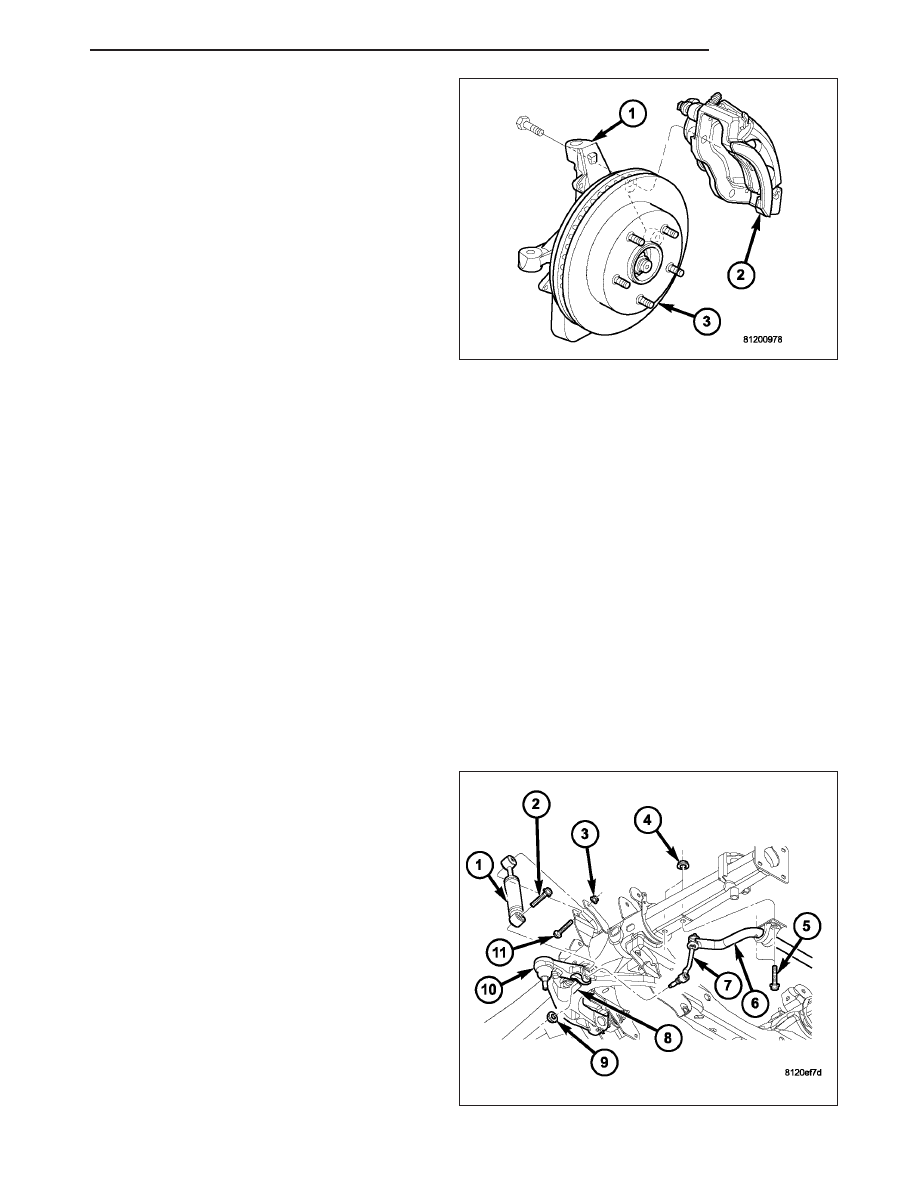Dodge Durango (HB). Manual - part 14

12. Install the disc brake caliper and adaptor assem-
bly (2) and tighten to 135 N·m (100 ft. lbs.) (Refer
to 5 - BRAKES/HYDRAULIC/MECHANICAL/DISC
BRAKE CALIPERS - INSTALLATION).
13. Install the wheel and tire assembly, (Refer to 22 -
TIRES/WHEELS/WHEELS - STANDARD PROCE-
DURE).
14. Remove the support and lower the vehicle.
15. Adjust the front suspension height and perform a
wheel alignment (Refer to 2 - SUSPENSION/
WHEEL
ALIGNMENT
-
STANDARD
PROCEDURE).
SHOCK ABSORBER
DIAGNOSIS AND TESTING
SHOCK
A knocking or rattling noise from a shock absorber may be caused by movement between mounting bushings and
metal brackets or attaching components. These noises can usually be stopped by tightening the attaching nuts. If
the noise persists, inspect for damaged and worn bushings, and attaching components. Repair as necessary if any
of these conditions exist.
A squeaking noise from the shock absorber may be caused by the hydraulic valving and may be intermittent. This
condition is not repairable and the shock absorber must be replaced.
The shock absorbers are not refillable or adjustable. If a malfunction occurs, the shock absorber must be replaced.
To test a shock absorber, hold it in an upright position and force the piston in and out of the cylinder four or five
times. The action throughout each stroke should be smooth and even.
The shock absorber bushings do not require any type of lubrication. Do not attempt to stop bushing noise by lubri-
cating them. Grease and mineral oil-base lubricants will deteriorate the bushing.
REMOVAL
1. Raise and support the vehicle.
2. Remove the tire and wheel assembly.
3. Support the lower control arm outboard end.
4. Remove the upper shock bolt (11) and nut (3).
5. Remove the stabilizer link (7) lower nut and then
separate the stabilizer link from the lower control
arm to gain access to the lower shock bolt (2)
(Refer to 2 - SUSPENSION/FRONT/STABILIZER
LINK - REMOVAL).
6. Remove the lower shock bolt (2).
7. Remove the shock (1).
HB
FRONT
2 - 23